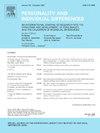儿童多基因得分、大脑结构和精神病理之间的关系
IF 2.6
2区 心理学
Q1 PSYCHOLOGY, SOCIAL
引用次数: 0
摘要
幸福是由遗传和环境因素的相互作用形成的,与健康和功能都有关。目前尚不清楚基因对幸福感的影响是否与大脑结构有关,进而与早期精神病理有关。在这里,我们调查了健康多基因评分(PGS)、磁共振成像(MRI)衍生的大脑结构测量和父母报告的儿童精神病理学测量之间的关联,这些测量来自青少年大脑认知发展(ABCD)研究(n = 8844;8.9-11.0岁)。预登记分析显示幸福感PGS与区域皮质厚度或皮质下体积之间没有显著关联,与海马旁皮质表面积只有很小的负相关(β = - 0.03, p = .002),而探索性分析发现与颅内体积(ICV;β = 0.04, p <;措施)。预注册分析显示幸福感PGS与一般精神病理之间存在微小的负相关(β = - 0.09, p <;.001)和内化(β = - 0.09, p <;.001)和外化问题(β = - 0.07, p <;措施)。ICV部分介导了幸福感、PGS和精神病理之间的关系,占这些关系的1.3 - 3.3%。研究结果表明,虽然健康的PGS与儿童大脑区域结构的联系有限,但它们对精神病理表现出很小的保护作用。本文章由计算机程序翻译,如有差异,请以英文原文为准。
Relationships between wellbeing polygenic scores, brain structure, and psychopathology in children
Wellbeing is shaped by an interplay of genetic and environmental factors and is associated with both health and functioning. It remains unclear whether genetic influences on wellbeing are linked to brain structure and, in turn, early-life psychopathology. Here, we investigated associations between wellbeing polygenic scores (PGS), magnetic resonance imaging (MRI)-derived measures of brain structure, and parent-reported measures of child psychopathology in a large cross-sectional sample of children from the Adolescent Brain Cognitive Development (ABCD) Study (n = 8844; 8.9–11.0 years old). Preregistered analyses revealed no significant associations between wellbeing PGS and regional cortical thickness or subcortical volumes and only a small negative association with surface area of the parahippocampal cortex (β = −0.03, p = .002), while an exploratory analysis identified a small positive association with intracranial volume (ICV; β = 0.04, p < .001). Preregistered analyses showed small negative associations between wellbeing PGS and general psychopathology (β = −0.09, p < .001) and both internalizing (β = −0.09, p < .001) and externalizing problems (β = −0.07, p < .001). ICV partially mediated the relationships between wellbeing PGS and psychopathology, accounting for 1.3–3.3 % of these relationships. The findings suggest that while wellbeing PGS have limited associations with regional brain structure in children, they exhibit small protective effects against psychopathology.
求助全文
通过发布文献求助,成功后即可免费获取论文全文。
去求助
来源期刊

Personality and Individual Differences
PSYCHOLOGY, SOCIAL-
CiteScore
8.50
自引率
4.70%
发文量
577
审稿时长
41 days
期刊介绍:
Personality and Individual Differences is devoted to the publication of articles (experimental, theoretical, review) which aim to integrate as far as possible the major factors of personality with empirical paradigms from experimental, physiological, animal, clinical, educational, criminological or industrial psychology or to seek an explanation for the causes and major determinants of individual differences in concepts derived from these disciplines. The editors are concerned with both genetic and environmental causes, and they are particularly interested in possible interaction effects.
 求助内容:
求助内容: 应助结果提醒方式:
应助结果提醒方式:


